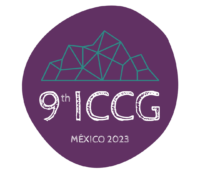Keywords: Conservation, Violence, Coloniality, Climate Change. Abstract: On March 8, 2017, a Samburu pastoralist ventured into a wildlife conservancy in northern Kenya to graze his cattle. There, he was shot and killed for illegal grazing by rangers working for the conservancy, which was established by the conservation organization the Northern Rangelands Trust (NRT). When his cousin found him three days later, 13 cartridges of ammunition were found on the ground next to him (Lempatu, personal communication, May 2017). This death was among several that involved the NRT, including eleven that were later investigated by an organization, the Oakland Institute (Mittal & Moloo, 2021), In this case, drought and a scarcity of pasture worsened by climate change urged this pastoralist to search for grazing land for his animals, only to then face violence and death at the hands of guards working for the NRT conservancy: the ecocide or terracide that decimated his grazing lands promoted him to move, only to face another life-ending violence.
In this paper, I take this incident of the killing of a pastoralist for grazing on land demarcated for conservation in order to consider the larger problem of violence in conservation and its relationship to the production of space. In his analysis of conservation and violence in Tanzania, Roderick P Neumann writes that “state efforts to control wildlife resources in Africa” are “inherently conducive to violence” (Neumann, 2001, p.306). A wide body of scholarship exists which analyses general and site-specific examples of conservation fueling violence (for examples, see Bocarejo & Ojeda, 2016; Fletcher, 2018; Marijnen, de Vries, & Duffy, 2021). I wish to situate violence in conservation in relationship to the planetary destruction or terracide that is characteristic of our times. Although conservation is considered a response to planetary violence, a way of protecting what remains of the earth’s biodiversity, I argue for a consideration of both climate change and conservation violence together, and suggest that their commonality exists in their consideration of different ways of defining the human. I draw on Silvia Wynter’s concept of the “coloniality of being” in which she argues that the Western European bourgeois conception of the human “over-represents itself” as if it were the entire species of human (Wynter, 2003, p.260), while racialized others are defined as “economically damnés and “underdeveloped” (p.321). Wynter’s notion of differentiated humans finds expression in the language and narratives of conservation groups which argue that “pastoralism is bad for the environment” (Ogada, personal communication, June 2017) and that pastoralists are incapable of managing their own environments (Survival International, 2023). I argue that these beliefs adhere to older ontologies of the human and undergird the exercise of violence by conservation organizations.
I will also attempt to theorize how the socio-spatial contours of land under conservation are formed by violence, in order to separate land into smaller parcels and to cut up ecological relationships in order to sell their constituent elements (Buscher et al, 2012, p.8). By contrast, I will examine pastoralists’ highly advanced grazing patterns and long-standing sets of rules collectively designed and enforced to match changing patterns of rain (Survival International, 2023, p.10). These grazing patterns depend on planetary entanglements between humans and the land, and humans and animals. I suggest a politics for “landing on Earth” (Latour and Weibel, 2020) at a time of the climate emergency requires attending to older geographies of mobility, to humans in movement entangled in a changing earth, and to reinscribing these provocations within the “genre of the human” (Wynter, 2003, p.313).
This paper is based on research conducted between April and June 2017 as part of a documentary in development which I am directing, tentatively titled Wildfire. It also draws on research which I conducted in collaboration with the Oakland Institute for the report, Stealth Game, “Community” Conservancies Devastate Land & Lives in Northern Kenya published in 2021. I wish to show the trailer for the film Wildfire as part of this presentation.
The film trailer can be accessed here: https://vimeo.com/236447291 (password: conservation).
References
Bocarejo, D., & Ojeda, D. (2016). Violence and conservation: Beyond unintended consequences and unfortunate coincidences. Geoforum, 69, 176–183. https://doi.org/10.1016/j.geoforum.2015.11.001
Büscher, Sullivan, S., Neves, K., Igoe, J., & Brockington, D. (2012). Towards a Synthesized Critique of Neoliberal Biodiversity Conservation. Capitalism, Nature, Socialism, 23(2), pp.4–30. https://doi.org/10.1080/10455752.2012.674149
Counsell, S. (2023, March). Blood Carbon: how a carbon offset scheme makes millions from Indigenous land in Northern Kenya. Survival International. https://assets.survivalinternational.org/documents/2466/Blood_Carbon_Report.pdf
Fletcher, R. (2018). License to Kill: Contesting the Legitimacy of Green Violence. Conservation and Society, 16(2), 147–156. https://doi.org/10.4103/cs.cs_16_148
Latour, B., & Weibel, P. (2020). Critical zones : the science and politics of landing on earth (B. Latour & P. Weibel, Eds.). ZKM/Center for Art and Media.
Marijnen, E., de Vries, L., & Duffy, R. (2021). Conservation in violent environments: Introduction to a special issue on the political ecology of conservation amidst violent conflict. Political Geography, 87, 102253–. https://doi.org/10.1016/j.polgeo.2020.102253
Moloo, Z. (Director). (2017). Wildfire. [Film Trailer]. https://vimeo.com/236447291
Mittal, A., & Moloo, Z. (2021, November 16). Stealth Game: “Community” Conservancies Devastate Land & Lives in Northern Kenya. The Oakland Institute. https://www.oaklandinstitute.org/sites/oaklandinstitute.org/files/kenya-stealth-game-
community-conservancies.pdf
Neumann, R.P. (2001). “Disciplining Peasants in Tanzania: From State Violence to Self-Surveillance in Wildlife Conservation.” In Peluso, N, & Watts, M. (Eds) (2001). Violent environments, Ithaca and London: Cornell University Press, 305-327. s
Wynter, S. Wynter, S. (2003). “Unsettling the Coloniality of Being/Power/Truth/Freedom: Towards the Human, after Man, Its Overrepresentation — An Argument.” cr: The New Centennial Review, 3, pp.257–337.
